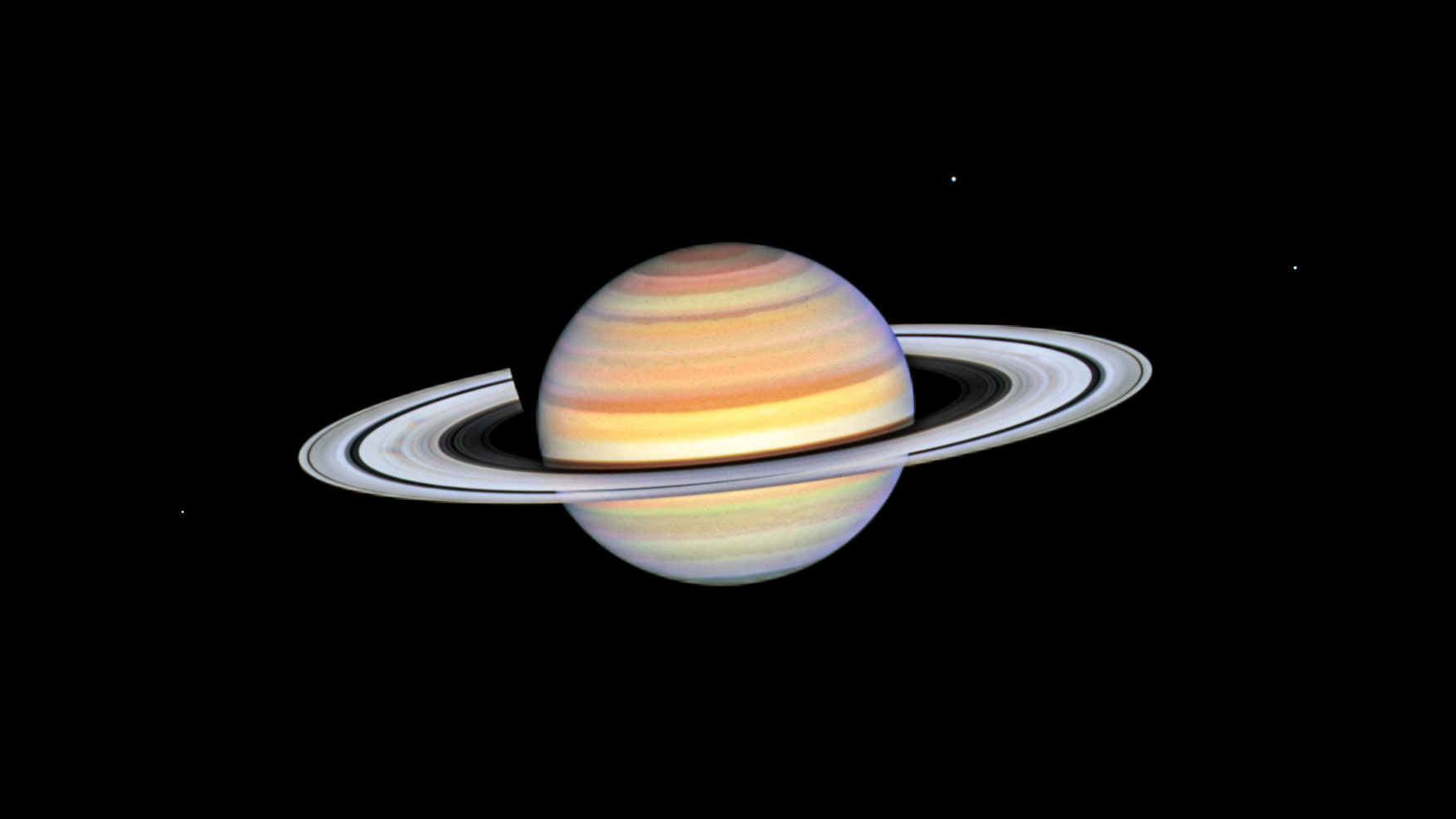4 min read
Cassini "Sees" Invisible Gas Doughnut Around Jupiter
January 24, 2001
Contact:
Guy Webster, JPL, (818) 354-6278
Jim Scott, University of Colorado, (303) 492-3114
NASA's Cassini spacecraft is helping scientists see the structure and
hour-to-hour changes of a giant doughnut-shaped gaseous ring around
Jupiter in unprecedented detail.
The doughnut, called the Io torus, draws its raw material from gases
spewed into space by volcanoes on Io, one of Jupiter's large moons.
The torus was detected in the 1970s, but almost all of its light is
invisible to the human eye. It is big enough that if Earth were in the
middle, the orbit of Earth's Moon would fit inside the hole of the
doughnut.
The first movie clip of the gyrating Io torus in extreme ultraviolet light

QuickTime Movie
"We're visualizing the torus and seeing it evolve and change in a level of
detail that people haven't seen before," said Dr. Larry Esposito, a
planetary scientist at the University of Colorado, Boulder, and principal
investigator for Cassini's ultraviolet imaging spectrograph instrument.
He and University of Colorado's Ian Stewart and other colleagues are
examining what the ultraviolet information can add to understanding about
the composition and temperature of the torus and the processes that
produce it.
The source of specific wavelengths of ultraviolet glow coming from the
torus can be identified as positively charged ions of oxygen and sulfur,
Esposito said.
Cassini, built, operated and managed by JPL, is monitoring the
concentrations, temperatures and distribution of the ions over a six-month
period to check and build upon current explanations for the torus. Gases
from Io's volcanoes contain oxygen and sulfur. The torus apparently gets
its ingredients and shape when some of the neutral oxygen and sulfur atoms
around Io become ionized by exposure to radiation from the Sun or from a
radiation belt that surrounds Jupiter. As ions, they are stuck to lines of
magnetic force in Jupiter's strong magnetic field. That field twirls along
with the planet's rotation, dragging the ions in circular paths around
Jupiter, so a shape that begins as a sphere around Io becomes a torus
around Jupiter.
The ultraviolet instrument on Cassini has checked the Io torus almost
daily since Oct. 1, 2000. So far, the monitoring shows a gradual decline
in overall brightness. The torus material apparently dissipates and cools
over time, to be replenished and re-energized by the next episode of
volcanic activity from Io.
"We might be seeing the tail end of one of those episodes," Esposito said.
"We're hoping Io will give us a new injection of material so we can track
the effects."
Cassini passed its closest to Jupiter on Dec. 30, gaining a gravitational
boost needed for reaching its main destination, Saturn. It will continue
studying the environment around Jupiter until March 22.
Esposito said he looks forward to investigating clues of a related
phenomenon at Saturn involving gases from the dense atmosphere of Saturn's
largest moon, Titan. Cassini will reach Saturn in July 2004. Information
about the dynamics of the Io torus and its possible cousin at Saturn could
deepen understanding of other phenomena linked to magnetic fields, said
Espositio. These phenomena include powerful magnetic storms that can
disrupt communications on Earth, and the shaping of nascent solar systems
called planetary accretion discs that can exist within the magnetic-field
influence of newly forming stars.
Additional information about Cassini-Huygens is online at http://saturn.jpl.nasa.gov.
The Cassini spacecraft is scheduled to arrive at Saturn in July 2004 to
begin a four-year exploration of the ringed planet and its moons. The
Cassini mission is managed by NASA's Jet Propulsion Laboratory in Pasadena,
Calif., for NASA's Office of Space Science, Washington, D.C. JPL is a
division of the California Institute of Technology in Pasadena.
Media Relations Office
Jet Propulsion Laboratory
California Institute of Technology
National Aeronautics and Space Administration
Pasadena, Calif. 91109.
Telephone (818) 354-5011







